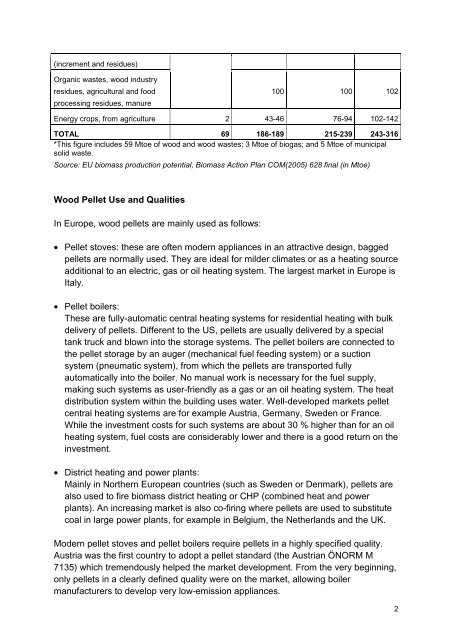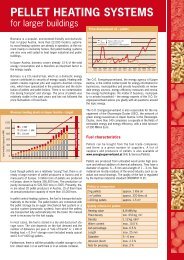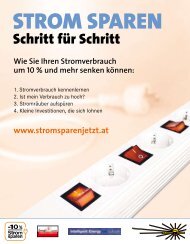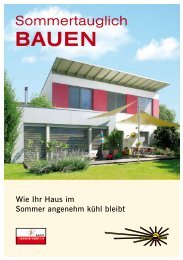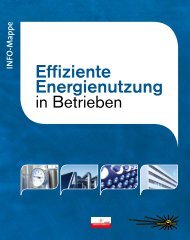Key Issues for Wood Pellet Market Development
Key Issues for Wood Pellet Market Development
Key Issues for Wood Pellet Market Development
Create successful ePaper yourself
Turn your PDF publications into a flip-book with our unique Google optimized e-Paper software.
(increment and residues)<br />
Organic wastes, wood industry<br />
residues, agricultural and food<br />
processing residues, manure<br />
100 100 102<br />
Energy crops, from agriculture 2 43-46 76-94 102-142<br />
TOTAL 69 186-189 215-239 243-316<br />
*This figure includes 59 Mtoe of wood and wood wastes; 3 Mtoe of biogas; and 5 Mtoe of municipal<br />
solid waste.<br />
Source: EU biomass production potential, Biomass Action Plan COM(2005) 628 final (in Mtoe)<br />
<strong>Wood</strong> <strong>Pellet</strong> Use and Qualities<br />
In Europe, wood pellets are mainly used as follows:<br />
• <strong>Pellet</strong> stoves: these are often modern appliances in an attractive design, bagged<br />
pellets are normally used. They are ideal <strong>for</strong> milder climates or as a heating source<br />
additional to an electric, gas or oil heating system. The largest market in Europe is<br />
Italy.<br />
• <strong>Pellet</strong> boilers:<br />
These are fully-automatic central heating systems <strong>for</strong> residential heating with bulk<br />
delivery of pellets. Different to the US, pellets are usually delivered by a special<br />
tank truck and blown into the storage systems. The pellet boilers are connected to<br />
the pellet storage by an auger (mechanical fuel feeding system) or a suction<br />
system (pneumatic system), from which the pellets are transported fully<br />
automatically into the boiler. No manual work is necessary <strong>for</strong> the fuel supply,<br />
making such systems as user-friendly as a gas or an oil heating system. The heat<br />
distribution system within the building uses water. Well-developed markets pellet<br />
central heating systems are <strong>for</strong> example Austria, Germany, Sweden or France.<br />
While the investment costs <strong>for</strong> such systems are about 30 % higher than <strong>for</strong> an oil<br />
heating system, fuel costs are considerably lower and there is a good return on the<br />
investment.<br />
• District heating and power plants:<br />
Mainly in Northern European countries (such as Sweden or Denmark), pellets are<br />
also used to fire biomass district heating or CHP (combined heat and power<br />
plants). An increasing market is also co-firing where pellets are used to substitute<br />
coal in large power plants, <strong>for</strong> example in Belgium, the Netherlands and the UK.<br />
Modern pellet stoves and pellet boilers require pellets in a highly specified quality.<br />
Austria was the first country to adopt a pellet standard (the Austrian ÖNORM M<br />
7135) which tremendously helped the market development. From the very beginning,<br />
only pellets in a clearly defined quality were on the market, allowing boiler<br />
manufacturers to develop very low-emission appliances.<br />
2


